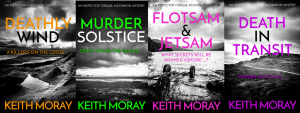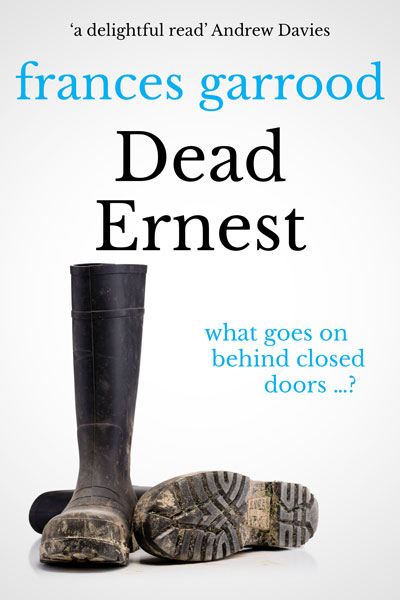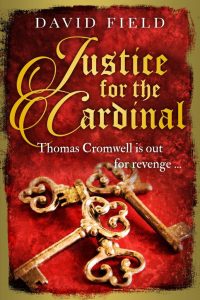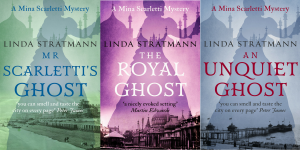When did you first start writing? Did a specific event encourage you to start?
I was bedriden a lot as a kid, where, being an only child, it was just me and my imagination. I’d pore over National Geographic magazines, whisking myself off on worldwide adventures, discovering lost tombs in the desert and diving shipwrecks in dangerous seas. I’d look at the drawings on my mum’s dressmaking patterns, wondering who these elegant creatures were – where were they going? who were they meeting? would they ever be in the same place at the same time? Everywhere I looked, stories formed. Evolved. Changed by the day. Even school projects became stories!

How much research do you do?
If you’re asking about my delving into the naughty picture business … as the Americans would say, I claim the Fifth Amendment!! The best thing about research is the travel. From Croatia to Sicily, it’s thrown up settings for thrillers, and from Tombstone to Tuscany for short stories, but in the case of the Julia McAllister series, the opposite happened. I was in the Klondike Museum in Seattle, where the plaque reads “…adventure and hardship … dreams made … hopes shattered … lives changed … a city transformed.” Staring at the photos of the suffering, the challenges, the bones of the 3,000 pack animals who died on one trail alone and whose bones still lie there today, I knew, in that instant, that I had to write about someone who took images that would also change lives. Plunging me into a world I knew nothing about. In 1895, there were no crime scene photographers in England. The Parisian police were applying the concept with considerable success, but in Britain, the Home Office was barely getting to grips with mugshots, never mind fingerprints, footprint casts or photographic records that captured a murder scene before evidence was trampled, contaminated or lost. So was born Julia McAllister, a spunky young woman taking risqué pictures to survive, and who would have happily continued, had someone not started killing her models and framing her for their murders.
Tell us about where you write / your writing habits.
I have a dedicated office at home and I tie myself to the desk pretty much morning till night, but here’s the thing. At the bottom of the garden is this. A rocky outcrop topped by the remains of a fortress dating back to 11th century, before it was razed by Richard the Lionheart’s troops. The little chapel (middle, top) was rebuilt a hundred years later, though the original crypt is still there, and to the left of this photo is the “new” château complete with crenellations and turrets. Behind it all, the land drops 200m to a little river with more arms than the goddess Kali (site of a tiny Roman bridge at the bottom, because we’re just off the Via Agrippa as well), and beyond the woods are vines. Billions and billions of little bottles in the making, and all the châteaux that go with them. Settings like this make any amount of hunching worthwhile. That, and of course travel……
What part of the writing process do you find most difficult? Starting, knowing when you’ve done enough research, the ending?
If you enjoy what you do, it comes easy. Plotting’s fun. Creating characters is fun. I love creating a climax (almost as much as I love creating an anti-climax) and I enjoy weaving humour into my writing. Most of all, though – and this is the best bit – I love making my readers trust me. That bit when they get to the end, and despite all the trails I’ve marked out, they still say “didn’t see that coming”.
How real do your characters become and do they ever seem to control their own storyline?
Without exception, I write about strong women fighting for independence and equality. The irony here is, they do it on my terms!!!

Do you ever feel guilty about killing off characters or do you relish it?
Whenever anyone asks what I do, I tell them I kill people for a living, but joking aside, I don’t believe the taking of any life should ever be treated lightly, even in fiction. Having said that, it’s important that the bad guys are never all bad … and the good guys are never all good.
Do you find it hard to know when to end a story?
By their very nature, thrillers have to be tight and I map them carefully. Nails are there to be bitten.
What are you working on?
The third book in the Julia McAllister series, in which she’s brought in to photograph the scene of a wealthy factory owner’s murder. Eight years earlier, the man’s son was kidnapped, the ransom wasn’t collected and the boy never found. Desperate to bring peace to a grieving mother, Julia has no idea her own life is in danger.
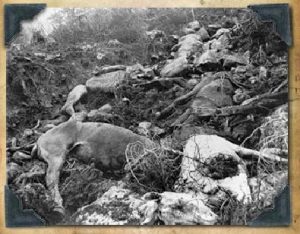
What are you reading right now?
The latest issue of Ellery Queen’s Mystery Magazine. I absolutely love short stories, they’re what I originally set out to write, and to quote Stephen King, EQMM is “the best mystery magazine in the world, bar none.” (And I’m not just saying that because I have a story in it!!)
What is your favourite book?
Without wishing to sound nerdy, the Encyclopedia Brittanica!! Honestly, you could dip in every day for a thousand years and still learn something new.
What book do you wish you had written?
Jeeves & Wooster — to leave a smile on as many faces as possible.
Do you love any genres/books that are very different from what you write?
P.G. Wodehouse (see above!) I’m also a great fan of the late Diana Norman’s historical novels. The way she handled romance is something else.
Tell us something surprising about you!
My mum died young, instantly and without warning, and just before Christmas as well. That made me realise how important it is to make every single moment count. Squeeze life until you hear the pips squeak.
When did you first start writing? Did a specific event encourage you to start?
For most of my working life I wrote reports, guides and training materials, largely for non-expert audiences, and I think this is where my love of using the written word to clearly express ideas came from. In 2006 I moved to Donegal, Ireland, and with more time on my hands, I joined a creative writing course which later became a writers group. The group met weekly and we shared pieces we’d written and this discipline forced me to produce lots of short stories, then my first novel.
How much research do you do?
I’m an endless researcher, probably using it as a distraction from actually writing. This is made worse because my novels are set in the past so detail needs to be correct. I hope I don’t dump lots of unnecessary facts in my works but find I do need to get settings and situations clear in my own head before committing anything to paper. The internet is, of course, a boon and a curse.
Tell us about where you write / your writing habits.
I tend to write on a laptop in an armchair in my lounge unless the distractions become too great, in which case I’ll decamp to my small office with a desktop. I also spend a lot of time scribbling in coffee shops, particularly if the muse eludes me (which is often).
Generally I plot my novels in great detail before I start writing in earnest but I may write an opening or closing scene before this to begin the process. I use software like Freemind and Scrivener to think through my storyline, characters, etc and then set out a scene by scene outline. I’m not slavish about the plan, but I find it helps in a crime/mystery to know the who, how and why before I begin.
What part of the writing process do you find most difficult? Starting, knowing when you’ve done enough research, the ending?
I find the redrafting to be most difficult, though I do enjoy doing it. Committing seventy or eighty thousand words to the page then throwing lots of them away is hard – but necessary. I’ll probably do at least half a dozen redrafts before submitting.
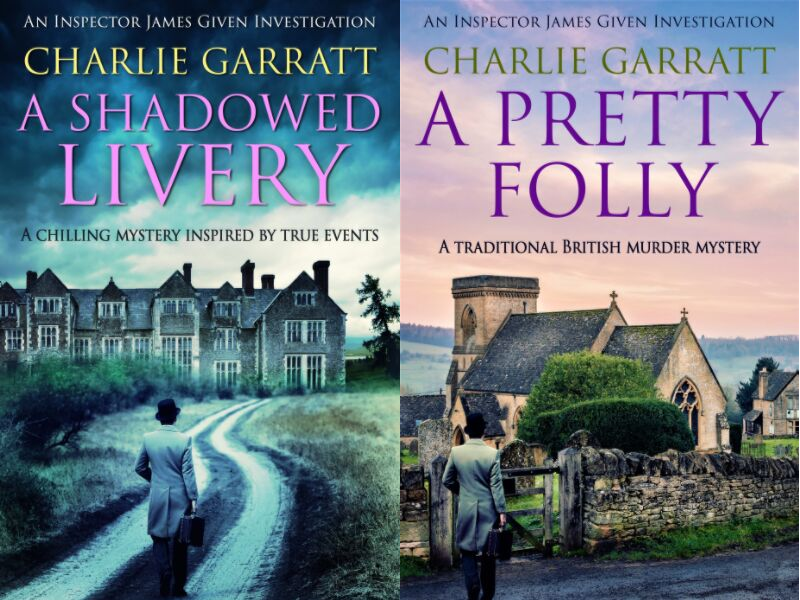
How real do your characters become and do they ever seem to control their own storyline?
My characters occasionally do things I didn’t plan and this can make things difficult when I’ve produced a storyline for them in advance. However, it’s often easier to change the storyline than to change my character’s mind! At the end of my third novel, A Patient Man, a character makes a change in their life which I didn’t plan, or want, but it was right for them at the time and I couldn’t avoid it.
Do you ever feel guilty about killing off characters or do you relish it?
Someone once wrote ‘if nothing is happening, kill someone’ and there is a temptation to do this. I wouldn’t say I relish killing characters, especially if I like them, but it’s a necessary part of the crime and mystery genre so doesn’t give me too much grief.
What are you reading right now?
I’ve just finished Love over Scotland by Alexander McCall Smith, a master of light-touch writing with real depth. He makes me laugh and think at the same time. I’m also reading Michael Caine’s autobiography Blowing the Bloody Doors Off which is full of advice about working hard to succeed in whichever endeavour you’re undertaking. It’s a real glimpse in to the world of a successful actor.
What is your favourite book?
Without hesitation I’d say The Grapes of Wrath. It was the one set book at school which blew me away and I’ve re-read it several times. Steinbeck’s images are stunning and I still can’t read the opening pages without my jaw dropping.
What book do you wish you had written?
Other than The Grapes of Wrath? My next novel – then I could relax for a while.
Do you love any genres/books that are very different from what you write?
I read some autobiographies and good quality humour. When on holiday I always lie to take at least one ‘classic’ with me which I haven’t read before. In the last couple of years I read all of the Sherlock Holmes stories and the complete works of George Orwell.
Tell us something surprising about you!
I took my first driving test in a Mister Softee ice-cream van. My dad combined being an ice-cream man with teaching me to drive so I’d meet him in the evening, finish the round in south Manchester, then drive the van back to Salford for the night. It was only natural to take the test in the van. There was only one front seat so the examiner had to sit on a wooded kitchen chair we put in for the purpose. Needless to say there were no seat belts at that time and the emergency stop sure gave him a shock. Also needless to say, I failed.
Laura Pennington’s story begins in the remote seaside hamlet of Ebton, nestled on the edge of a sandy beach in the shelter of the dramatic vertical, grassy headland of Stangcliffe.
Ebton does not really exist, but the well known Saltburn- by- the-Sea, with its Victorian buildings, pier, railway station, and funicular railway, does. My imagined Ebton is set in a quieter pre-Victorian era before the arrival of the Darlington branch rail line arrived in the 1860’s that saw Saltburn boom as a resort.

From the coastal path upon the headland of Huntcliffe (my Stangcliffe), which is part of The Cleveland Way, you can look back onto the original enclave of The Ship Inn and the fisherman’s cottages. The ancient burial mound of Cat Nab stands to its side and behind this lies 52 acres of mixed ancient woodland; the Saltburn Gill Nature reserve. When Laura sets out to cross the gill, wild garlic and bluebells would carpet her path.
The history of this remote part of the North Yorkshire coast is strongly linked to smuggling. I set To Love, Honour and Obey against this historic backdrop, at a time when the whole of the stretch of coast from Scarborough, Whitby and the bay towns north to Saltburn and my home town of Redcar were involved in the notorious trade. The expensive wars with America and France had resulted in high government taxes being placed on certain goods so whole communities helped to unlawfully land such illicit goods as: brandy, gin, tea and silk and brandy.
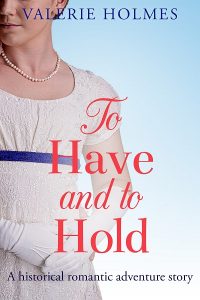
Local fishermen would take out their cobles, the local clinker-built fishing boats, to fetch the goods ashore. From there they were dispersed through the cluster of dwellings, across farmland, moors, hidden in outhouses, churches or wherever until they were to be distributed.
Smuggling has a romantic image to it, but these men could bludgeon anyone who stood in their way and so many turned a blind eye to what was happening. Besides, the money that could be made helped them to survive through harsh times.

John Andrew, the ‘King of Smugglers’ was born in Scotland to a wealthy family and was well thought of locally, even having a position in the local militia, yet he coordinated the smuggling operation from the existing Ship Inn. My Coble Inn is based on this old smuggling base. But whereas John Andrew ruled the area from his inn, mine is just the hub for the local community.
In To Love Honour and Obey, Oberon Spratt coordinated his violent gang along the bay towns back in 1805. In To Have and To Hold, set in 1819, Obadiah Pennington who saved Ebton from Spratt’s attempt to burn part of it down has, over the fifteen year gap, turned to bringing in respectable trade and is trying to attract richer folk to Ebton-by- Sea.
Laura was born the daughter of a poor fisherman, but that fisherman had fancy ideas, seized opportunity when it landed in his path, so her story begins with her being a respectable daughter of a successful business man. From a humble home on the edge of a beach Laura now lives in a new house on the lower cliff.
In distance so near – yet a world apart.
When did you first start writing? Did a specific event encourage you to start?
There has never been a time when I didn’t write. As a child, my idea of a perfect game was to tell a story to my teddies, then write it down. It was never a conscious decision, it was part of me then and it still is now.
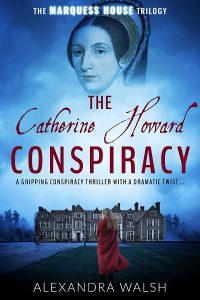
How much research do you do?
It entirely depends on the story. For a while I wrote film scripts, mostly comedies, and they didn’t need any research. Likewise my first few attempts at novels (still languishing unpublished!). One story, The Music Makers took all its chapter heading from the wheel of the Major Arcana cards in the Tarot pack. Although I was a fairly proficient Tarot reader back then, I did research other, wider meanings, for the cards to add extra depth to the main character’s adventures.
The Marquess House Trilogy, which has a split timeline comprising of a present day strand and a historical section has taken years of research. Book one: The Catherine Howard Conspiracy was actually not my intended starting place. The big reveal that appears in book two: The Two Elizabeths was the kernel of the idea for this story and, over the years, I have written many different versions of it trying to make it work. However, none of them were quite right and after several years of juggling work, life and researching Elizabethan England I realised the only way I’d be able to capture this monster of a story on paper was to split it into three separate tales, rather than trying to cram it into one book. Three books, one for each piece of jewellery: two ruby rings and a silver locket.
It was actually devastating because it meant starting again from the beginning. In true frustrated writer style, rather than face this unhappy truth, I wrote a comedy instead, entitled The Patron Saint of Married Women, which was set in the present day and needed very little research. In. Your. Face. History.
In the end, I caved in and began researching Henry VIII’s fourth and fifth brides. I also made the alarming decision to dump my two main characters: Isabella and Oliver. I never liked them much anyway. The name Perdita had been running around my head for a while. From reading Dodie Smith’s One Hundred and One Dalmatians when I was younger, I knew it meant Little Lost One and somehow this seemed appropriate for my main character. Then one morning, I woke up with the question: “Who is Piper?” running around my head. Immediately, I knew she was Perdita’s twin sister and something clicked into place.
The very very first version of this story featured Isabella (now gone) mourning her twin sister who had died under mysterious circumstances on an archaeological dig after she had unearthed a silver locket. The idea was that she had been murdered by MI One Elite. Strangely, the nasty old Watchers were there from the beginning, as was Mary Fitzroy, James Rivers and Alistair Mackensie. Jerusalem was always around too, although it took me a while to settle on its true nature. Warren Dexter was another one who survived the character cull. However, it wasn’t until Perdita and Piper popped up that the story suddenly opened up before me. Then, Kit arrived. He had been through a number of names and he finally found an identity because I quite fancied Kit Harington who plays Jon Snow in Game of Thrones. Yes, it’s an embarrassing admission but he was the inspiration for Kit and once he had his name, the last piece of the puzzle was in place and the story flooded out.
I’ve long since moved past my toe-curling crush, though. Ahem.
Anyway, in answer to your question, at present, several months of research and writing of detailed timelines. By gathering all the information into one huge chart, it’s easier to write fluently and present a more rounded and believable version of my historical periods.
Tell us about where you write / your writing habits.
I have a purpose built writing hut in the garden with insulation and a heater. I write every day and, at the moment, am lucky enough to be able to treat it like my day-job.
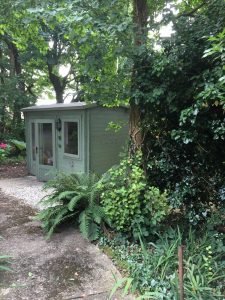
What part of the writing process do you find most difficult? Starting, knowing when you’ve done enough research, the ending?
It varies. I love the lure of the blank page. Every piece of paper is an adventure waiting to unfold. Knowing when you’ve done enough research is a tricky one but there comes a point where you have to plunge in and see what happens. I don’t like writing endings, not because I don’t like them but because it means you’re saying goodbye to your characters.
How real do your characters become and do they ever seem to control their own storyline?
Very real. They all seem to end up taking over their own storylines. Sometimes, I even argue with them. Although perhaps I shouldn’t have admitted that…
Do you ever feel guilty about killing off characters or do you relish it?
Never! I worry about killing them off for different reasons. What about if I suddenly realise I need them again but they died in Chapter Four?!! EEEKKK!
Do you find it hard to know when to end a story?
Usually I know the end before I begin. The Marquess House trilogy has proved more troublesome though because in my head, it’s one long story, so realising I had to make three endings, instead of just the one at the very very end of book three, has taken a while to adjust to.
What are you working on?
Part three of The Marquess House trilogy. It’s working title was always Prince Oliver but I don’t think this works any more. The title will arrive when its ready.
What are you reading right now?
The Moon Sister by Lucinda Riley. It’s part five of her Seven Sisters series. I only recently discovered these books but I’m really enjoying them.
What is your favourite book? Who is your favourite character?
This is a tough one. How do you choose between so many friends? And also, do I go for something literary and make it look as though I’m very high brow or do I tell the truth?!
For a long time now, my favourite book has been Harry Potter and the Prisoner of Azkaban. I was going through quite a tough time when I began reading these books and, not only was Hogwarts a wonderful place to hide, I was awed by J K Rowling’s brilliance. Goblet of Fire had just been released, the films had been cast and the storm of Harry Potter was building. I never like making judgements on phenomena unless I’ve read/seen/visited them, so I bought the books. Philosopher’s Stone hooked me from page one. Chamber of Secrets worried me – who was Dobby? Was he good or bad? – but when I read the third book with its fabulous twist with Scabbers and the appearance of Sirius Black who had first been mentioned in chapter one of book one, I realised this was more than a series of children’s books. This was truly magical. I’ve asked for help at Hogwarts many times and it’s always been given.
My favourite character is Hermione Granger. Although Harry is pretty amazing too.
I also love Ballet Shoes by Noel Streatfeild and Moll Flanders by Daniel Defoe.
What book do you wish you had written?
Apart for the Harry Potter series? The God of Small Things by Arundhati Roy or The Passion by Jeanette Winterson.
Do you love any genres/books that are very different from what you write?
I try to read a broad cross-section of genres. If a story is well-written, it’ll grip you no matter what the genre. I try never to suffer from literary snobbery. Every book is worth trying, you may not make friends there but you don’t need to be rude!
Tell us something surprising about you!
I play musicals in the background while I write.
When did you first start writing? Did a specific event encourage you to start?
I can’t remember a time when I didn’t write something; poetry as a child, then on to short stories when my children were small, and then novels.
How much research do you do?
It depends. I had to do quite a lot for Dead Ernest as it was set during WW2, but often it’s just my own experience. I did once phone a safari park to find out how a monkey would behave if trapped in a car (for Women Behaving Badly), and they said they had no idea!
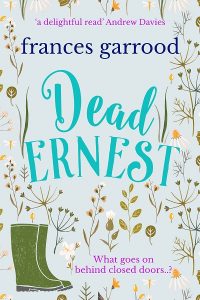
Tell us about where you write / your writing habits.
I’m afraid I don’t have any. I’m totally lacking in discipline, and I just write when I feel like it, at a desk in a corner of our bedroom. Not very professional, I’m afraid…
What part of the writing process do you find most difficult?
Starting, knowing when you’ve done enough research, the ending? I think the middle is difficult, but I’m not a planner, so I can get stuck anywhere. I usually just let the story take me where it wants to, and sometimes it doesn’t want to!
How real do your characters become and do they ever seem to control their own storyline?
They become very real, and I really hate letting go of them in the end. They certainly control the story to a great extent, especially when they’re speaking. I love writing dialogue.
Do you ever feel guilty about killing off characters or do you relish it?
A bit of both. But it’s also quite cathartic for me, because I was widowed fairly young, and I use my own experience of bereavement.
Do you find it hard to know when to end a story?
So far, my books have ended more or less of their own accord, but that could change (though I hope not).
What are you working on?
I’ve actually started three, and am waiting for one of them to take off. Two are sequels, and sequels are – I’ve discovered – a lot harder than I thought they’d be
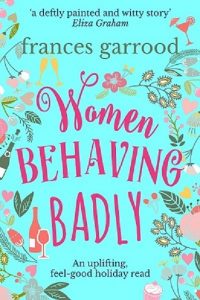
What are you reading right now?
A little-known novel by Anthony Trollope (my favourite author): The Belton Estate.T I’ve read pretty well all his books, several more than once, and was delighted to find this one.
What is your favourite book? Who is your favourite character?
Without doubt, George Elliot’s Middlemarch. And my favourite character has to be Winnie the Pooh.
What book do you wish you had written?
At the moment, it’s Gail Honeyman’s stunning debut Eleanor Oliphant is Completely Fine. Otherwise, pretty well anything by Anne Tyler.
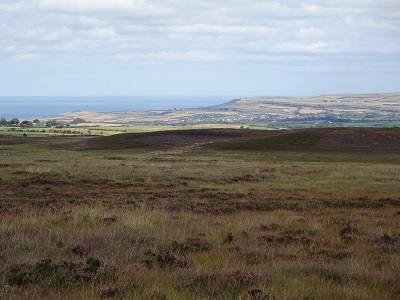
The North York Moors national park has one of the largest expanses of heather moorland in England covering an area of 554 sq miles. For centuries people have crossed this exposed, wild, boggy moorland for trade, social and religious reasons leaving a network of fragmented stone pathways that are lovingly walked and explored by hikers today. All who do respect this mainly inaccessible landscape, which is both beautiful and dangerous to traverse. But what tales these ancient paths could tell of the people who have trodden them over the centuries.
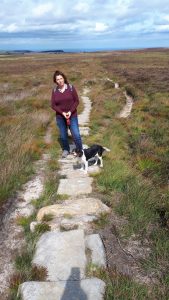
The oldest broken pathways, known locally as ‘Monks trods’ could date back to the Neolithic era. Certainly Roman soldiers have used some of the broader causeways near Whitby. The connection with monks stems from the medieval period when abbeys flourished within the region. Today we see the ruins of Whitby, Rievaulx, Guisborough and Mount Grace Priory to name but a few of these once great communities. These monasteries often housed large numbers of people and linked to other communities by the network of pathways. In Medieval times wool would be transported on them to ports such as Hull and from there to markets overseas.
The monasteries often owned farms and land miles apart. In For Richer, For Poorer I linked the two fictitious towns of Gorebeck and Beckton by one such trod that cuts across Gorebeck Moor. Gorebeck Abbey School was linked to Beckton Abbey by trade and the pathway, although rugged and unwelcoming it was known to Parthena. This was no easy route of escape by, especially at night time, it took courage and daring – but essentially local knowledge, or else it would certainly have been tantamount to a death wish. This summer I was caught out in a sudden horizontal rain storm on one of the Quaker’s Causeway, near Commondale and even with modern waterproofs and hiking boots the wind had a bitter chill.
Parthena’s pursuer, like Beth and Willoughby in To Love, Honour and Obey had to travel in single file as the stones were only designed to take a train of pack horses travelling in a line as goods were regularly transported by pack horse.
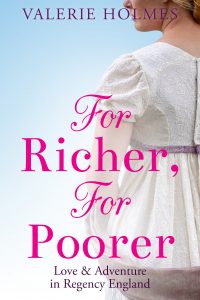
Beyond the medieval period the need to transport coal, charcoal, jet, alum and lime grew. Fresh fish from the coast needed to reach its market as quickly as possible whilst it was still fresh. Wagons would easily become bogged down in such conditions and so for centuries the pack horse was essential.
These are some of the legitimate uses for these ancient routes, as well as the need for communities such as The Quakers in the early eighteenth century to reach meetings and friend’s houses. They were also essential for people to reach the mills and towns for work as the centuries turned.
However, in the early nineteenth century, when many of my stories are set, smugglers also had local knowledge, could pay a man more than a farmer’s wage and they also needed to disperse landed contraband as quickly and efficiently as possible. Therefore, many of my stories have mentioned the use of the old trods for this purpose.
Once roads were built to cross the moorland then the need for the trods diminished and some of the ancient stone was reused for building. These roads may have even been built over the original paths as their way was the most direct. But what is left provides an interesting connection to the past and a way for people today to access this beautiful wilderness today.
When did you first start writing? Did a specific event encourage you to start?
I started writing when I was a teacher. I first wrote short plays for performance. When I gave up teaching in 2012, it was the bicentenary of the birth of Charles Dickens. When I read that he had a secret desire to be a detective, I wondered if I could write the crime novel that I had always wanted to write, so I gave it a try with Dickens as my detective.
How much research do you do?
Because my novels are historical crime novels, I need to do a lot of research into Dickens’s life and times, and into nineteenth century forensics. I need to know what the Victorians knew about poison, or stabbing, or shooting, or drowning and post mortems in the mid-nineteenth century.
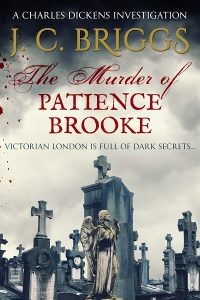
Tell us about where you write / your writing habits.
I write in a little room in my house. I often write sections of the novel long-hand and then type them up and make changes as I go. I always carry a notebook to jot down ideas when I’m on a train or waiting for someone – you never know what you might overhear!
What part of the writing process do you find most difficult? Starting, knowing when you’ve done enough research, the ending
I find it easy to start. Often the beginning of a novel comes from something I’ve read, especially something from Dickens’s letters. Then I get stuck in working out the plot, especially when I find that X couldn’t have done the murder at that point because she/he was somewhere else at the time!
How real do your characters become and do they ever seem to control their own storyline?
Very real – that’s why I enjoy writing a series. You can bring characters back. It’s very odd how characters you expected to play a minor part in the story start to develop in ways you had not planned and begin to play a major role. Then they seem to have a back story and you think: where did that come from?
Do you ever feel guilty about killing off characters or do you relish it?
It’s always satisfying to get rid of the murderer because that means the case is solved. And there have to be other victims – one murder doesn’t make a crime novel. You can’t help relishing the dramatic deaths, but sometimes you do feel sorry for the victim. Then you think: sorry, but you’ve had your lot, it’s time for another killing – keep up the suspense!
Do you find it hard to know when to end a story?
Not in the sense that you know it’s over when the case is solved, but you also have to think carefully about the very last paragraphs. You want to leave the reader thinking about the effects it has all had on the characters who are left and what their futures hold – if they have one.
What are you working on?
A novel which begins in Ferrara where Dickens went in 1844; I found a letter he wrote from there in which he describes some girls looking down into a stretch of water. It was twilight, the sun was setting and the walls of the castle were blood-red. Dickens writes that he knew the place although he had not been there before and that it chilled his blood. I wondered what those girls were looking at in the water and why Dickens was suddenly frightened. Murder?
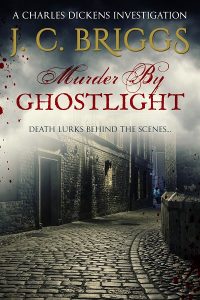
What are you reading right now?
Bleak House
What is your favourite book? Who is your favourite character?
Great Expectations. Miss Havisham.
What book do you wish you had written?
So many, it’s too hard to choose, but there’s a wonderful book: Pinkerton’s Sister by Peter Rushforth, which is so rich in character and incident and full of all kinds of literary allusions that I can’t help wishing …
Do you love any genres/books that are very different from what you write?
One of my favourite authors is William Trevor; I’ve just finished The Silence in the Garden which is about Ireland before the First World War. I love fiction about Ireland.
Tell us something surprising about you!
I was the voice over in a television show in Hong Kong. I was a puppet named Violet the Vulture – I played her as a kind of avian Lady Bracknell. My husband, who wrote the show, was Barney the Bear, and we had a kangaroo called Alice Springs.
Are you working on a new series set in the Age of Sail? Have you written a naval thriller set during the World Wars? Are you passionate about seafaring stories? Sapere Books wants to hear from you!

We are actively looking to acquire nautical fiction from both debut and established authors. We are particularly interested in historical naval fiction, nautical thrillers, and books in a series.
If you are an author who owns the rights to a previously published naval series, or a writer working on a new nautical novel, please get in touch and tell us about it!
Email our Editorial Director, Amy Durant, directly with some information about your nautical writing and a synopsis of your naval novel and we will get back to you as soon as possible.
We hope to hear from you soon!
When did you first start writing? Did a specific event encourage you to start?
I first realised how much I enjoyed writing when I was about seven years old. I wrote and illustrated a story about a dog’s crazy adventures and then won a competition with it at my local library. That success gave me the confidence to believe I had found something I was really good at, and I haven’t stopped writing since. I no longer illustrate my work though!
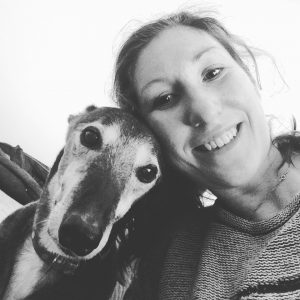
How much research do you do?
I don’t do any research initially. I write my first draft as quickly as I can, without looking back. I’ll then make notes during my second draft, listing any topics that I need to look into in order to make sure the story is believable. Luckily the internet exists, so it’s usually not too difficult to research any subject! It is also useful to talk to people who are involved in the fields of work that you’re writing about.
Tell us about where you write / your writing habits.
I write wherever and whenever I can. I have little kids so sometimes it can be difficult to find the quiet time that I need. This does mean that the time I do find is really valuable, and I make the most of it. In an ideal world I would have my own office and an endless supply of coffee and baked goods to help me write. Maybe one day!
How real do your characters become and do they ever seem to control their own storyline?
I definitely think of my characters as real people. I feel a responsibility to tell their stories correctly. While I wouldn’t say that they control their own story lines, I do know when I write something that doesn’t feel right for the character, and I have to go back and fix it. Sometimes when I am writing dialogue for characters it flows naturally onto the page, almost as if I am listening in on their conversation.
Do you ever feel guilty about killing off characters or do you relish it?
I don’t like killing characters off; even characters who I’m not very fond of. One of the main characters in Running in Circles died originally. It never felt right, but for a long time I thought that it was essential to the storyline. Eventually I realised that they didn’t have to die, and I actually think the novel works better for it.
Do you find it hard to know when to end a story?
Yes! I think the ending of a story is the hardest part. There are always so many plot tangles to tie up. Often, I think I’m finished several times before I actually am. It’s very difficult to end on the right note.
What are you working on?
I am working on a follow up to Running in Circles. Lucy and Steve are investigating again, but this time they are on the north coast of Devon. I’m still in the fairly early stages of a first draft, but so far they are looking into the disappearance of a pop star.
Do you love any genres/books that are very different from what you write?
I enjoy reading science fiction books. Perhaps one day I’ll try to write one. I don’t think they’re considered very mainstream or cool, unlike sci fi films which often do well. My favourite sci fi writer is Philip K Dick. I also like some of Michael Crichton’s books. Recently I read Dr Adder by K W Jeter, which had some pretty strong Philip K Dick vibes. I’m reading American Gods by Neil Gaiman at the moment which has some sci fi elements to it, although it probably doesn’t classify. It’s a hard book to categorise! I’m really enjoying it.
Running In Circles is available on Amazon now!

When did you first start writing? Did a specific event encourage you to start?
In the 1990s. I can’t be more specific as I went to several creative writing classes, usually with the same tutors. The class would start out well attended, then people gradually would drop out – usually in winter. Then the following year the funding would change and we’d start up again at a different venue. But I always persevered and about three or four of us went to the same classes, which I enjoyed very much. Finally one tutor suggested I sent off some of my stories to a magazine. The first one was rejected but the editor must have seen something in my writing and made some useful suggestions. So luckily my next one was accepted by Ireland’s Own. I still have the cover framed on my wall. It’s dated August 1999 and has the picture of a Connemara pony on the front.
How much research do you do?
For Song of the Shuttle I went to Quarry Bank Mill, a working cotton mill near Manchester owned by the National Trust. The volunteer guide on duty was so helpful, explaining how the machines worked, then demonstrating them. He was really patient answering all my questions. From a large second hand book store in South Manchester I was lucky enough to find a book from the television series about the American Civil War shown back in the 1990s. It was packed with information and original photographs which was invaluable to my research. Other books like ‘The Hungry Mills’ and ‘Reveille in Washington’ helped enormously and also a map showing the major battles of the war.
For subsequent books I’ve turned to Victorian history which has always interested me. The internet is invaluable too. Where else could you discover the uniform that an American military hospital orderly wears?
Tell us about where you write / your writing habits.
I’ve set up office in a small bedroom since my son and daughter have left home. It overlooks the back garden and I can see the small birds bobbing about in the trees. I’m afraid I’m not an organised writer or set time each day for writing. I have a habit of waking up at an unearthly hour with an idea in my head and can’t get back to sleep until I’ve typed it out. I did try to write those ideas down on a pad by the bed but couldn’t read my writing in the morning. So I drag on a hairy old dressing gown – and tracky bottoms in winter – and sneak off into my office for an hour or so. Then I slip back into bed and sleep soundly.
What part of the writing process do you find most difficult? Starting, knowing when you’ve done enough research, the ending?
Most of my stories are written in my head long before they reach the page. Then when I have time I want to get down the information as quickly as possible. Of course I have to go through it all again and edit it. Sometimes I seem to write in Polish! I’m not keen on editing and don’t like rewriting at all.
How real do your characters become and do they ever seem to control their own storyline?
My characters do seem to take on a life of their own and I instinctively know how they will act. This is a very perceptive question as many times my ideas and plots will change when faced with what a character would do.
Do you ever feel guilty about killing off characters or do you relish it?
I have sat and wept when one of my characters died. Normally it’s only the baddies that ‘get it’. I feel they get what they deserve.
What are you reading right now?
At the moment I’m reading a spy novel by John Le Carre and persevering with it. I get annoyed by the macho attitude of the men though! I have Lamentation by C. J. Sansom waiting in the wings. I love his Shardlake novels.
What is your favourite book?
My favourite book is Jane Eyre. I’ve always loved it from being young when I had the Dean and Son version for young readers.
What book do you wish you had written?
Something brilliant like The Book Thief. I’ve recommended it to so many people and they’ve all enjoyed it.
Do you love any genres/books that are very different from what you write?
I have very eclectic taste. I really enjoy Terry Pratchett books. Patrick O’Brian’s seafaring novels are a favourite and also Lyndsay Davies’ Roman detective Falco. Although they are historical novels, they are very different from the romances that I’m writing.
Tell us something surprising about you!
I’ve had a painting exhibited in Manchester Art gallery. I won a competition where all the art classes round the city sent a painting that was inspired by one of the Gallery’s paintings. It was called ‘Things to Do’ and in one corner featured a cosy armchair, a book and a cup of tea. The rest of the canvas had an ironing board, a dirty frying pan, an un-ironed shirt and lots and lots of socks – black with a different coloured heel. None of the socks matched! The blurb was that I’d rather sit reading than doing all the chores. Along with a certificate I received a bag of art goodies. Unfortunately I don’t have time to go to any art classes nowadays.
Chapter One
Sunday, March 28th, 2010
Danny Sanchez arrived at 10:27.
It was already bedlam; hundreds of people covered the dusty patch of waste ground beyond the white walls of the property, shouting, pushing, arguing among the cacti and scruffy palms. The excavator’s arm loomed menacingly above the roof of the two-storey villa.
The demolition had been scheduled for nine a.m., but frantic negotiation had earned the elderly expat owners a three-hour stay of execution while the house was cleared. The whole neighbourhood turned out to help, Briton and Spaniard alike. A stream of people walked back and forth along the edge of the unpaved road, carrying everything and anything they could salvage – doors, windows, even the kitchen work surface. The problem now was where to put it all. An incongruous pile of household items was collecting around the trunk of a fan palm. Danny watched as a negligee blew free from a box and wrapped itself around a cactus.
Christ, what a mess.
In eighteen years of journalism, Danny had witnessed dozens of horrors – people cut from the wreckage of car accidents, a woman leap from a burning building, a suicide on a railway track – but this was something new. They were going to demolish Peggy and Arthur Cookes’ house and nothing could be done to avert it. He’d seen the paperwork. Nearly every penny the poor old duffers had was invested in the villa; a lifetime’s equity would be smashed to rubble. It was like waiting for an execution.
The Junta de Andalucía, southern Spain’s regional government, had sent a woman in her mid-thirties to oversee the demolition. Crafty, Danny thought; people found it harder to get angry with a woman, especially an attractive one. Her hard hat and fluorescent bib bobbed at the centre of a tightly-knit group of people. Guardia Civil officers in green boiler suits formed a protective ring around the Junta woman. Then came the leaders of the protestors, waving documents and trying to argue over the shoulders of the Guardia officers.
Behind them was the press pack, two dozen strong, cameras and microphones waving above the crowd as it surged and rocked. Gawkers and curious children milled at the edges, wondering what all the fuss was about.
For her part, the woman from the Junta looked genuinely distraught at what she had to do. Danny had no idea whether she could follow the English words being bellowed at her, but it was obvious she understood the gist. She kept pointing to the paperwork on her clipboard, raising hands and shoulders in shrugs of helplessness. Someone, somewhere had decreed the demolition must go ahead; it was her job to get it done.
The Cookes were inconsolable. Peggy sat on an armchair that had been dumped among spiky clumps of esparto grass. Tears carved streaks through the dust that had settled on her face. Danny recognized the armchair; he’d sat in it when he’d interviewed them a year before, when the demolition orders were first served. Arthur Cooke had looked dapper and defiant as he posed for the cameras back then; now, every one of his seventy-three years weighed upon him. He stood with his hand on his wife’s shoulder and turned moist eyes as Danny approached.
“Not now, mate,” he said, shaking his head. “The bastards are about to ruin us.”
Danny nodded, glad he’d been spared having to ask the obligatory “How do you feel?” It was amazing how dumb those four words could make you feel sometimes.
Peggy Cooke wanted to speak, though. “Why us?” she said, her voice shrill. “Out of all the hundreds of people, why does it have to be us? I want you to print that. It’s not fair.”
Why us? That had been everyone’s first reaction in March 2009 when the judicial demolition orders were delivered to eleven different families dotted around the municipality of Los Membrillos. It seemed so monstrously unfair, given the scale of the problem in Almeria, the province that occupies Spain’s south-eastern tip. A Junta survey had uncovered more than 12,500 irregular constructions in just ten of the worst affected municipalities. But the Spanish legal system was a Heath-Robinson contraption manned by characters from Kafka; immense and baffling in its complexity, arbitrary in the decisions it dispensed and spitefully prescriptive when it did so. It was one of the dangers of emigrating to Spain, the flipside to all the sunshine, fiestas and good living.
Not that it had worried the tens of thousands of Britons who had flooded the Almanzora Valley at the turn of the century, buying up villas and plots of land for self-builds, breathing life into the moribund rural communities that nestled below the Sierra de los Filabres mountain range. But the rush to expand had left thousands caught in the legal quicksand between the local and regional government of Andalusia. Local councils could grant licences to build, but the regional government had the right to challenge those licences. The catch-22 was that no one would stop you from planning to build a house; the house actually had to be built – and the money spent – for it to come to the Junta’s attention and challenge its legality.
Why us? Danny knew the answer to Peggy Cooke’s question; he’d interviewed the mayor of Los Membrillos. “We had so many applications for building licences, we were swamped,” the mayor had said, unlocking a cabinet and indicating three large cardboard boxes leaking paperwork. We only got round to processing eleven.” That was the bitter irony of it; by trying to follow the rules, these unlucky eleven home owners had created a paper trail that Junta officials could follow back to specific properties.
Time was ticking on. The crowd was getting angrier, the shouting louder. More Guardia officers arrived. Danny phoned everyone and anyone he could think of who was involved with the case.
It was the usual pass-the-parcel.
The council blamed the Junta, the Junta blamed the courts, the courts blamed the council; all down the line, each link of the chain shrugged its shoulders and pointed to someone else. Arthur Cooke watched Danny in action, hoping that this man who spoke such perfect Spanish could somehow work a miracle. Danny finished the phone call, shook his head. The flicker of light in the old man’s eyes dulled.
Paco Pino arrived at 11 a.m., yawning and scratching at his chest. “My one day off,” the photographer said, screwing a lens onto one of three cameras dangling from his neck, “And this has to go and happen. Just my luck.”
Danny was glad the Cookes couldn’t speak Spanish; crass comments like that were the last thing they needed to hear. Not that Paco was a bad person; experience had simply made him blasé, like everyone who made a living reporting other people’s misfortunes. Truth be told, Paco was a saint in comparison with some; Danny had spoken to one of the journalists sent by a UK red top to cover the announcement of the demolition orders the previous year.
“We won’t be interested again now until they knock the things down,” she said as she left, nodding toward the cloudy March sky. “Let’s hope they do it in summer, eh? I might get a bit of a tan.”
The pile around the palm tree grew: beds, sofas, lampshades, mirrors, cardboard boxes stuffed with clothes and crockery. Danny looked at his watch. Not long now.
At ten to twelve, uniformed officers of the Policia Local cleared the last of the protestors from the garden and checked no one was left inside the house. There were more scuffles on the white gravel outside the villa, more insults in English and Spanish. The property’s black gates had been lifted from their hinges earlier to allow the excavator through. Having shoved a final protestor outside, Guardia Civil officers formed a human barrier in the space between the gateposts. Protestors waved paperwork at the Junta woman as she looked at her watch and waved toward the workers.
The sudden roar of the excavator’s engine caused everyone to freeze and fall silent. The crowd turned as the engine revved and the excavator’s mantis arm uncoiled and rose above the house. For a moment, time seemed stilled…
…and then the air thundered as the excavator’s claw drove down through the roof. An angry moan emerged from the crowd as the arm rose and hundreds of dislodged tiles showered and smashed on the ground. The excavator arm dipped once, twice, three times more, prising the roof apart before ripping backwards and pulling free a ragged-edged section of brickwork. Looking through the jagged rent it created was surreal; the neatly-tiled interior walls had been exposed, giving a view inside a giant dolls’ house.
The Cookes stood holding each other: Peggy sobbing; Arthur straining to keep her on her feet, his face stoic. They were tearing his house down, but he wouldn’t show a flicker of weakness. Another huge section of wall tumbled away; it fell to the ground with a thud. Dust rose, people coughed, choked, began walking back along the road. Danny pulled his jacket up to cover his mouth.
The Spanish woman atop the ridge didn’t really care about the foreigners; their house was illegal; it had to come down.
She was only there for the spectacle, to have something to tell her friends tomorrow at the market.
She was the first to see it.
Her mouth gaped; then she began to scream and point toward the corner of the house. People looked to see what the noise was but the sounds were rendered unintelligible by the rumble of falling brickwork and the excavator’s diesel chug.
But the dust was settling now; people were following the woman’s outstretched hand, squinting as they too noticed the thing wedged in the narrow gap between exterior and interior wall.
A Guardia Civil officer rushed to the excavator, banged on the window. The machine fell silent. Other people had noticed the shouting woman now and were pressing closer, shading their eyes, unsure of what they were seeing. For the second time that morning, a sudden silence halted the crowd.
Danny thought it was a mannequin at first. And then the corpse fell forward, bending from the waist, its blackened head rocking back and forth. Some people screamed; others stood open-mouthed; some turned to run.
Arthur Cooke’s face remained expressionless as he stared at the semi-skeletal corpse lolling from the broken wall of his house. Then, without moving a single muscle of his face, he toppled forward and fell heavily to the earth.
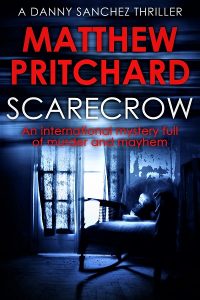
Need to know what happens next? Get Scarecrow now from Amazon.
Ellen Tyrell’s Nose and Other Suspicious Circumstances
With thanks to the British Newspaper Archive
I am looking for a drowned girl. My old friend, Professor Swaine Taylor will, no doubt, provide the grisly forensic detail in his Medical Jurisprudence: ‘the eyelids livid, and the pupils dilated; the mouth closed or half-open, the tongue swollen and congested … sometimes indented or even lacerated by the teeth …’
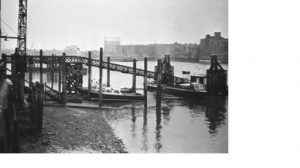
I need an inquest on said drowned girl; this is where the British Newspaper Archive comes in. There are drowned girls aplenty in London in the decade 1840-49. Poor things, dragged from the Thames, the Regent’s Canal, the Surrey Canal, the New River, the Serpentine, the lake in Regent’s Park, from under Waterloo Bridge – a favourite spot for those seduced and abandoned girls. There they lie stretched out on muddy shores and banks, their bonnets askew, one boot missing, or both, their faces pale like Millais’ Ophelia, or more likely, bloated and bruised, or half-eaten by decomposition – or rats. Their bodies sometimes float, buoyed up by petticoats – the effect of air retained by the clothes, or the presence of gases. Sometimes a thin hand grasps a clump of weed which, according to Professor Taylor, indicates that the victim went into the water alive. Did she fall or was she pushed? Suicide, most often.
I find the case of the suicide of two young sisters dragged from a Leeds canal in April 1847, tied together by a handkerchief. The handkerchief is pitiable somehow, and memorable. Dickens must have read of that case for he uses the same circumstance in Our Mutual Friend. Something of a thrill in contemplating that, but I need only one girl.
I need an unknown drowned girl, unclaimed, buried at the expense of the parish, and forgotten. Somewhere in a village, a mother wonders about her lost child. She will never know what became of her ruined darling. The Morning Post in February 1842 explains: ‘In London the bodies are taken to any obscure vault, public house, or police office. The Coroner directs the parish to advertise the body, often in vain.’
I find several cases of unidentified females in the newspaper archive. In July 1841, according to The Morning Advertiser, a young woman was pulled from the London Dock. She was never identified. I am intrigued by the report’s dark observation that ‘No one could walk into that water by accident.’ Unknown, too, is the identity of the ‘fine-made ’young woman taken from the Serpentine in October 1845 and deposited at St George’s Workhouse. Yet she has a distinctive mole on her left cheek, dark hair and hazel eyes. Surely somebody missed her. Seduced and abandoned, perhaps, like poor Eliza Luke found in the New River in April 1844.
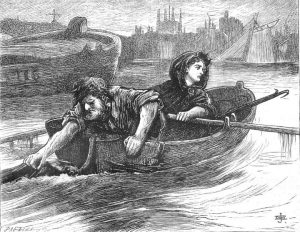
However, this is a crime story, so, naturally, I need a drowned, unknown, murdered girl. This is more difficult. Such is the damage done by the water, or the bridge, or the rocks of some lonely reach that it is often impossible to find enough evidence of murder. However, there is the case of Eliza Rayment found in the River Thames in October 1847. There is a deep cut under her chin. Four inches in length, an inch in depth, so reports Mr Bain, the surgeon, at the inquest, and there are ‘two arteries divided’. The wound might have been inflicted by the deceased, but ‘a person using the right hand would naturally make an incision on the left hand side.’ Eliza Rayment was right-handed. Mr Bain attributes death to the loss of blood from the wound. Poor Emma Ashburnham who was formerly Emma Meyer had once lived ‘in some splendour’ in York Road under the protection of ‘a gentleman of fortune’, but it is not known how she came to be in the river at Waterloo Bridge with a deep and ugly stab wound in her side.
Blood brings me to Ellen Tyrell and her nose. Ellen was found in the Surrey Canal in August 1845. Mr John Hawkins, the surgeon, finds an abrasion on the right side of the nose, but from the decomposition of the body he is unable to distinguish any other external marks of violence. Given that she was seen in the company of a man, not her husband, the night before she disappeared, the inquest is adjourned for the purpose of producing further evidence.
Oh, Eliza Rayment, what a mystery, what a suggestive tale, a married woman whose whereabouts were unknown for some days before your death. Who were you with? Emma, who was that ‘gentleman of fortune’? Alas, neither of you is for me, and Ellen, your nose, telling though it is, does not serve my purpose. I am ‘Oh, that I had been content with a cut throat, or a stabbing, but, in the interests of my plot, the victim must be strangled or I must rewrite the whole damned thing.
There is evidence I do like: the 1847 case of the unknown drowned young woman wearing a false plait at the back of her hair; the one in 1842 in which an umbrella is found nearby, bearing on its ivory handle the initials ‘F.H.’ And I like especially, the single earring she is wearing. I have a fancy for a single ruby like a drop of blood in my victim’s ear.
I dig deep into the newspaper archives and I find it – just the one, and the indefatigable Mr Bain is on hand to assist. The body was found in October 1848 near Battersea Bridge, much decomposed, appearing to have been in the water some time. Nevertheless, Mr Bain finds evidence of a ligature encircling the neck, though what this might have been he cannot say.
It is quite enough for me. Possible death by strangulation.
Oh, all right, I admit it: the body was that of a sailor. But, it did happen. Evidence of a ligature was found. I’ll just have to put an ‘s’ before the ‘he’. No one will know.
‘F.H.’? Names: Fanny? Florence? Flora? Ah, here’s a name in the archives: ‘Harvest’. I have her: Flora Harvest, the Grim Reaper cometh.
The Murder of Patience Brooke by J. C . Briggs

We (Caoimhe and Amy) will be at Write Now 2018 run by Chorley & District Writers’ Circle.
We’re going to be talking all about our company, what we can offer to authors and what we’re looking for in our books.
We’re a friendly pair and would love to meet lots of great authors at Chorley so come find us for a chat!
It’s on November 17th and you can find more details and buy tickets here.


The Cooper Museum, housed in a small building in the heart of historic downtown Upland, offers a cozy and often crowded venue for local events. A favorite place to hang out with city residents, this cheery place often invites authors whose books feature the history of American towns and people, especially people from Upland, California.
I wrote my first edition of He Wrote Her Every Day in Upland and printed twenty copies in time to celebrate my mother’s 90th birthday. Based on letters Mom had saved from my father in Germany during WWII, the book was my mother’s gift to share with the family. This hard-cover version of their story includes photographs and follows a narrative using all the documents and souvenirs my mother saved. When I received an invitation to present my book on Author’s Day at the Cooper, I was delighted—and a bit apprehensive.
I decided to prepare a visual display of a few of Dad’s letters and many of the souvenirs. Did I mention that Mom saved everything? I needed three tables, but managed to make do with two. A three-foot square map mounted on a display board earned center stage, balanced between my tables. It was also a place I could hide if no one showed any interest in my book.
The map, sent to all the soldiers and their families from the Army post-war, depicts the route this Infantry division traveled from the beginning of the war until the final return of the last Occupation troops. So when the recommissioned Queen Mary finally brought Dad home, Mom already had the map of the route taken by his troops known as the Railsplitters.
Our afternoon of book signing invited walk-through traffic in the patio area outside of the small museum. A beautiful afternoon in California promised our group of about a dozen local authors a busy opportunity to talk to our neighbors about our books. I was hoping for a few sales and a chance to meet my fellow writers.
Flattered when the assistant curator pulled a chair up at my table, I smiled widely as he began to go through all of the V-mails, coins, K-ration kit remnants, and the seventy-five-year-old postcards that make up my father’s collection. He looked through the assemblage of bits and pieces that had been the focus of my writing for about a half hour before, at last, he raised his head and just said, “Wow!”
Hungry for some positive feedback, I answered by asking, “Wow what?”
His response was a surprise. “You should not have all of this sitting out here in the sun for anyone to handle. This should be in a museum.” I thought he was trolling for a donation to the Cooper, but no, he assured me that mother’s bits and pieces needed a place where scholars could read the primary documents and preserve them for posterity.
He told me about the National WWII museum in New Orleans, LA. It took me a year to do it, but Kim Guise, curator of the museum in New Orleans, guided me through the process and helped our family contribute the collection to them. Mom was tickled to sign the donation papers and make it official. The museum staff is currently working on a display of the letters and souvenirs of Private James William Hendrickson, Jr. It is, according to Guise, the largest collection of letters and documents from an individual American soldier.
This was exciting, but the best experience at the Cooper came on yet another day when my display had been transferred from the originals to mere copies. The Railsplitter Map held pride of place and looked as sharp and clear as the originals.
He Wrote Her Every Day will be published by Sapere Books and is coming soon!
The Daily Mail and The Sun are both pretty shitty newspapers, I ought to know: I wrote for them both.
Why? Because they were the only newspapers that paid decent money to journalists working out of Spain.
Anyway, stories that were suitably comic, tragic or grotesque enough for The Mail or The Sun only occurred infrequently on my patch – but when they did, I entered an incredibly stressful, real life version of the cartoon, “Wacky Races”, as the first journalist to get there and get the pictures and facts, got the sale. The rest just wasted time and petrol, and I was always in competition with at least 3 or 4 others.

And it was those missed sales that started chipping away at my integrity. Because if you work for shitty newspapers, you very quickly begin to behave in a shitty way.

With me, it began with a bit of cheeky chicanery. Much of rural Spain consists of unmarked dirt tracks, the names of which are known only to locals, so most reporters rely on rural petrol station attendants for guidance, and I often slipped the staff a tenner to misdirect any other strangers asking around.
Pretty tame stuff, but it was the start of the road to Shitsville. And once you’re on it, the question quickly raises itself: How far down the road are you prepared to go?
I found out in 2010, when I covered a story about the collapse of a house which had killed two expats in a tiny hamlet way up in the mountains.
When I got there, I deployed my usual set of tricks. First of all, in order to find the house, I lied and said I was a friend of the dead couple and was there to pay my respects. This got me detailed directions, as well as plenty of pats on the back and commiseration from local Spaniards. I may even have squeezed out some crocodile tears for their benefit.

The property was all locked up and wrapped with police incident tape, so I climbed the fence and started looking for a decent angle from which to take a photograph, clambering, hopping and jumping all over the rubble as I did so. When a neighbour of the dead couple emerged and asked me what the hell I was doing, I ignored his question and asked him the only thing that interested me: ‘Have you seen any other reporters here before me?’
When he said, ‘No’, I climbed back over the fence and started looking for somewhere with Wi-Fi coverage.
I got the sale. But as I was celebrating in a local bar, looking through the photos I had taken, I began to notice that there was dried blood and other types of biological matter all over the collapsed concrete pillars and rubble. Then I noticed some of it had stained the tip of my desert boot as I’d been merrily desecrating a place where two people had died a sudden and likely very painful death.

I lay awake that night, and slowly came to the realisation that I did not have what it took to be a fulltime tabloid journalist. My journey along the road to Shitsville had ended.
And that’s where Danny Sanchez was born. Because Danny does have what it takes and I enjoy exploring the grottier side of journalism through the prism of the character.
Most readers warm to Danny immediately, but others don’t, and I suspect it is the ruthless side of Danny’s character that is the reason for this – he climbs walls, he lies, he goes through bins, he enters people’s homes uninvited and he “borrows” documents – in short, he does whatever he has to in order to get the story.
The trick is to make the people he is investigating so loathsome that the reader sympathises with Danny, despite his shady behaviour.
Anyway, for those of you who dislike the character, I’d ask that you cut the guy some slack – he trawls through the shitty side of journalism so I don’t have to.
As a businessman I had always written a lot, reports, analyses, reams of statistics, and the like, but after I retired I decided to write down my life history – and that, as they say, was a different story.
I had lived all over the world, 26 years of military service before business saw to that, but my adventures, mishaps, near death experiences, triumphs and failures were of no interest to publishers so I began to look for someone to write about who might spark some kind of response. I did enjoy the freedom of expression inherent in writing outside of the constraints of business so I went a bit further.
Where had I been? What and who had been of interest?
Among other places, I had lived for two years in the Outer Hebrides and witnessed the ongoing effects of the Highland Clearances, the juxtaposition of a modern army, testing missiles alongside an ancient agrarian/fishing society had been interesting, so I decided to return there and do some research.
The most shocking thing about the Highland Clearances to me, was the fact that they were not events mired in the dark ages, but events of the nineteenth century, how could that be, how can such cruelty be allowed within the dawning of the industrial age? The answer came from a quotation in an Edinburgh newspaper, The Scotsman, when asked why he was doing this the Laird in question replied: “Because I can.”
I wondered how he could have that attitude and followed history back to the Norman conquest before I found the answer – which was: He could.
In Saxon times every man was entitled to enough land to feed his family, after William the Conqueror all the land belonged to the king and he appointed lords to govern it for him. Nice change in attitude, unless you were doing alright before King William arrived.
Characters uncovered so far
Robert – Duke of Normandy
In amongst the detritus of Norman history I came across the king’s little known eldest son, Robert, and thought him strangely under-reported, especially when I delved into his personal history and reali

sed that attempts had been made to erase his history. However they left enough for me to build a very different picture of, ‘Robert – Duke of Normandy,’ than his brother, Henry I, would have liked.
Which brings us to my first offering, Robert – The Wayward Prince, a trilogy which tells Robert’s life story the way that he would have liked it to be written.
Nicholaa of Lincoln and Matilda de Caux
Then the next trigger took place after a local radio station broadcast an article about the last Saxon Strip Farm left in England. It is in a place named, Laxton, in Nottinghamshire, and is still governed by a bailiff presiding over a manorial court.
 It was once in the domain of a woman named Matilda de Caux, who was the Constable of the Castle, and the Keeper of the King’s forest in Sherwood and part of Derbyshire, a title which she inherited.
It was once in the domain of a woman named Matilda de Caux, who was the Constable of the Castle, and the Keeper of the King’s forest in Sherwood and part of Derbyshire, a title which she inherited.
From the top of the castle motte, which still exists, can be seen the towers of Lincoln cathedral, only sixteen miles away across the Great North Road and the River Trent – a very strategic position.
That view led me to Lincoln where to my astonishment there had been another female in charge at the same time, Nicholaa de la Haye. Both women had inherited their positions of constables, (castellan) and keepers – except that Nicholaa had also been appointed as Sheriff of Lincoln. So the whole of King John’s forest between the North Sea and the hills of Derbyshire were in the control of two redoubtable women. I had to tell their story.
The book came out briefly last year to be withdrawn and made ready for re-issue later this year, in both paperback and ebook versions by Sapere.
Berengaria, Queen of England.
You must know her. Basque, Princess of Navarra (Navarre), Queen of England and Cyprus, Duchess of Normandy, Countess of Anjou, Maine, and Duchess in waiting of Aquitaine, first and only wife of Richard the Lionheart. No? Well you soon will, Berengaria is my next project and is well underway for release later in the year.
There must be more women of substance, under-recorded by history, or deleted because it did not suit the patrons of the monkish scribblers who recorded such things, well they’re out now, ready to take their proper place.
….mind, it might have been different if I had been an eighteen year old celebrity trying to get my life story published.
The world of Valerie Holmes’ fiction is based and inspired by some of the beautiful scenery from my childhood home in North Yorkshire. Growing up in the north-eastern seaside town of Redcar I was always impressed by the variety of scenery that surrounded me. From the moors, woodland and dales further inland to the rugged headland of Huntcliffe (my Stangcliffe).

Its overshadowing presence dominates the seaside resort of Saltburn (Ebton) that nestles at its foot at the southern end of the long sandy bay to the marshes and river mouth in the north. I have adapted the settings and recreated the notorious smuggling past within the region for my novels and many of my novellas.
In To Love Honour and Obey, Stangcliffe is the scene of a brutal murder. The protagonist, Willoughby James Rossington, sets out to discover the murderer of his father.
His journey will take him to the magnificent setting of the ancient city of York where the majestic Minster is visible to him from atop a coach as he crosses the Vale of York. Unbeknownst to him, Beth, the young woman who is destined to share his quest, is also admiring the spires from the yard of an inn where she works.
From York they both travel to Whitby stopping at an inn on the moor road, similar to the ancient Spout House near Chop Gate in Bilsdale. This cruck built building has been lovingly preserved. In Whitby, the ancient, bustling, whaling port, with a fascinating history going back beyond the famous Synod of Whitby, with St Hilda in AD 664, they find peace and tranquillity in the grounds of the ancient abbey. Not far from this location is the church of St Mary’s, founded in the twelfth century and perched on the cliff above the ancient whaling port, which has acted as a landmark for many a returning weary sailor. The unusual boxed pews provided an excellent location for a fight between the evil Oberon Spratt and one of his minions, whilst an anxious Beth looks on from the gallery trying not to give herself away.

The old town has many narrow lanes, yards and snickets one of which inspired a scene for a bath house that Beth is treated to, much to her chagrin.
On leaving Whitby they head north to return to the scene of the murder at Ebton and pass the fires and industry of an alum works. Alum was important and had been for centuries for the fixing of dies and paper making. The remains of one such of these workings can been seen at The Peak Alum Works, south of Whitby.
Authors are often asked what inspires them to write. I cannot claim that the locations are always my starting point, but my work is definitely influenced and enhanced by the places I visit in my research around the area and provide an excellent reason to return to this beautiful, wild, historical and very friendly region.
Valerie’s novel To Love, Honour and Obey is available now.
Sapere Books are publishing books of mine from two different series involving two different detectives.
One, involving Lieutenant Josef Slonský is set in 21st century Prague; the other, featuring the university lecturer Master Mercurius, takes place in 17th century Netherlands. There are obvious differences in setting that inform the writing.
Slonský is a career policeman. He is inclined to take the occasional drink to get the mental cogs turning faster. There is nothing much in his life except his work, and since he is 58 when the series starts, the threat of retirement looms large. Slonský has all the support that modern science can offer, including a mobile telephone, though he does not really know how to do anything beyond making calls on it.
Mercurius is very much an amateur, an accidental detective who falls into the work when a series of abductions in Delft leave the local authorities baffled, so they send to the University at Leiden for a clever man who might help them solve these; and the Rector sends Mercurius. He is a young man, only 33, a lecturer in moral philosopher and an ordained minister, and he has little in the way of science to help him.
To my mind, though, none of these is the major difference between the series. I award that distinction to the fact that Slonský books are written in the third person, whereas Mercurius narrates his; and I thought it might be instructive to discuss why that is so.
I would love to say that it was the result of a carefully balanced decision, weighing all the factors for and against either approach, but if the truth be told the stories just came out that way. In my head, the action in Slonský appears as a film in which I stand back, observe, listen and record, whereas the Mercurius books involve me as a character in the tale I am telling. I toyed with telling Mercurius in the third person, but it didn’t feel right, and I have spent a bit of time thinking why that might be.
I think the reason is that Slonský is a big character, but he has a large regular supporting cast and it is important to me that we should get to know them. If he were also the narrator, I think he would dominate too much. Mercurius, on the other hand, is the only character who appears in all that series of books, and as the only consistent element the story has to pivot on him anyway.
This is not just of analytical interest. Many crime novelists consistently favour one or the other approach. I am prepared for either, but it changes the way the story develops. In Slonský stories things can happen when he isn’t around; Mercurius only knows what he sees and hears. That inevitably leads to a slower unwinding of the evidence, because it would seem forced if all the clues turned up in an afternoon. Slonský can send his colleagues out to investigate several lines of enquiry and bring them back together for a conference; Mercurius spends a lot of time travelling to discover things for himself. There is no telephone or telegraph system that he can use, and he does not possess a horse.
There have been rare examples of writers changing the voice during a series – Conan Doyle had Holmes writing one of his stories, for example – but generally once the choice is made, you’re stuck with it. It seems strange, given how important it is, that I am not more systematic in my selection!
LYING AND DYING, the first thriller in Graham‘s Slonský series, is available to pre-order now.
Full-time employee by day, aspiring novelist by night? Then you’ve come to the right article, my friend! That’s how every author who ever nabbed themselves a publishing deal started out. So, let’s do what all dreamers do, and make a list:

1. Be Prepared.
Dib-dib-dib, as the Boy Scouts say. Be prepared to make your first priority a notepad and a pen. Don’t leave home, work, or bed, without them. Inspiration is all around. That punch-line you blurted out. The way someone pronounces, ‘Yugoslavia’. The colour of Boredom. Get as ephemeral or literal as you like, but write it down. Because you’re a writer, remember? It’s not 9-to-5. It’s stride-in-your-step, adrenelin-jolting devotion!
Between You and Me: Check that notepad is tantalizingly empty, and the pen actually works before you get too attached to a brainwave. Ahem.
2. Time on your Side.
Writers tend to fall into either early-morning or late-night camps. That’s because our brains rather wonderfully surrender all traces of reality when we’re pre- or post-dreaming. Marian Keyes set her alarm a couple hours ahead of the office to complete work on her first novel. Jay McInerney kept cosying up to the keyboard way past the midnight hour. No matter which option hits the mark, make it a date.
Friendly Advice: When circumstances don’t allow, don’t beat yourself up. Keep jotting down ideas as casually as you like, and know you’ll make it up to your manuscript with a ream of words waiting in the wings.
3. Plan, plan, plan!
I’d like to be one of those streamlined, linear-types, writing at stealth from beginning to end, but guess what? It doesn’t happen. I know where I’m going. I’ve a pretty good idea why we’re going there, but midway is about as far as I get, plot-wise. Then it’s time to iron-out the initial plan. If you’re armed with a water-tight synopsis, I look on in awe, but I need to submerge in the writing before emerging with a first draft.
Lesson Learned: If something isn’t working, it’s because it doesn’t work. Move on. Re-think. Re-write. No Re-grets.
4. Prioritise
As nice it would be to flounce off into the nearest vestibule and announce an early retirement from all daily responsibility, it’s first things first. Your mind can’t wander into fiction beneath a cloud of household chores or office deadlines. Pin them down. Get them done. Then consider yourself free to focus.
Working Lunch: Make the most of any break. Walk. Think. Be alone. Listen to your characters. Trust your instincts. Jot those thoughts down in that notepad you carry these days.

5. Bite into the Best Bits
There’s no point setting aside time, staring at a screen, wondering where to find a word count. Sometimes you have to take it by surprise. Don’t think of it as a book. Start with that ending you can’t wait to write, or the big reveal you know has to happen. Hit the highlights. Pick out the praline, and throw away the toffees! Why not? It’s your work. Kill off that character before they’re introduced in chapter eight, you absolute maverick! Look in the rearview, and you’ll find a picnic trail of plot development.
Novel Navigation: Make sure there’s batteries in the torch. In other words, map each scene in a working synopsis as you go along. See that shard of light up ahead? That’s the ending, compadre.
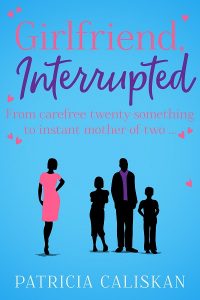
Visit Patricia’s author page or find out more about her second novel, Girlfriend, Interrupted.
Prologue
BENTLEY Ernest, Husband of Annie and father of William (Billy) passed away suddenly on January 2nd 2004 aged 83.
Funeral January 10th at 12.30 p.m. at Great Mindon Crematorium. Family flowers only.
“What about beloved? Something like that?” Billy asked, scrutinising Annie’s crabbed handwriting.
“Beloved? Beloved what?”
“You know. Beloved husband, much-loved father. That sort of thing.”
“Did you love your father, Billy?”
“Of course. Well, I suppose so. Yes, of course I did.”
“Well then. We can put much-loved father.”
“And husband? What about husband?”
“No,” said Annie. “Not beloved husband. Not any sort of husband.”
“But Mum!” Billy looked hurt, as though even now he were taking his father’s part. “You must. What will people think?”
“It doesn’t matter what people think,” said Annie firmly. “I know.”
Chapter One
No one had expected Ernest to die, least of all Ernest. He prided himself on coming from tough, Yorkshire stock, and had often told Annie that he would easily outlive her. So, when he had his heart attack, Annie’s feelings were at first of surprise rather than anything else.
“Are you sure?” she asked the policewoman, who was making tea in the kitchen. (How odd that it was always the police who were sent to break bad news; almost as though dying in the street were an offence against the law). “Are you sure he’s dead?”
“Quite sure. I’m so sorry, dear.” The policewoman handed her the tea (much too sweet, and not hot enough) and put an arm around her shoulders. “It must be a terrible shock. Is there anyone you’d like us to contact?”
“Billy. My son Billy. You’ll need to contact him.”
Because, of course, Billy must be told. Strangely, Annie had rather wanted to keep the news to herself for a while; to taste it and think about it on her own before sharing it with anyone else. But Billy would think it odd if she didn’t tell him at once, and besides, there would be things that would need doing. Annie had only the vaguest idea of what those things were, but she was sure Billy would know how to deal with them. Billy was good at that sort of thing.
“How do you know it was a heart attack?” Annie asked. “How can they tell?”
“Well, they can’t tell. Not for certain. But that’s what it looks like. There’ll have to be a post-mortem, of course.”
“Ernest wouldn’t like that,” Annie said, remembering Ernest’s dislike of being touched and even greater dislike of anyone seeing him in a position of disadvantage. A post-mortem, she could see, was going to place him in a position of considerable disadvantage.
“It has to be done, dear. It’s the law. Because he didn’t die in hospital.” The policewoman poured herself a cup of tea, although Annie hadn’t invited her to have one. Death, it would seem, muddled up all the rules of normal behaviour.
Ernest would have hated dying in the street like that, with everyone watching. Dying in hospital would have been acceptable, with dignity and nurses and clean sheets. But then Annie might have had to sit with him while he was doing it, and she wasn’t sure she could have managed that. Perhaps, after all, it was a blessing that he had died in the street.
“Where was he?” she asked. “Where did Ernest die?”
“Outside the fish and chip shop.”
“Outside the fish and chip shop,” Annie repeated, surprised. It seemed such an odd place to die. She wondered what he had been doing there. The fish and chip shop was the wrong end of town for the barber’s, which was where Ernest was supposed to be, and he’d only just had his lunch, so he couldn’t have been hungry. But now she would never know. Nobody would ever know what Ernest was doing before he died outside the fish and chip shop.
Annie was aware of the policewoman watching her, waiting to see how she would behave. “What do people usually do?” she asked, suddenly interested.
“Do?” The policewoman looked bemused.
“Yes. When someone dies. You must see a lot of them. When you tell them, what do they do?”
“Everyone’s different of course,” said the policewoman carefully. “They cry, of course, and some people even scream. And sometimes they’re just shocked and quiet. Trying to understand what’s happened.”
“And what am I?”
“What are you?” The policewoman’s teacup paused, trembling, halfway to her lips.
“Yes. How would you say I was taking it?”
“I would say,” the teacup returned firmly to its saucer, “I would say that you were being very brave. Perhaps it hasn’t quite sunk in yet,” she added gently. “It’s a terrible shock for you.”
Was it? Was it really a terrible shock? A surprise, certainly, but a shock? Annie wished the policewoman would go away and let her think. She needed time to sort herself out; to get to grips with what had happened. Ernest was dead, and she didn’t feel anything much at all. Not sad, not happy, not anything. Was she normal? Was it okay to feel like this?
“Ernest is dead.” She tried the words to see what they felt like. “Ernest — is — dead. It sounds so strange.” She paused. “He had this little joke he used to tell: ‘Once upon a time there were two worms fighting in dead Ernest.’ I never thought it was funny, and Billy didn’t like it, but it always made Ernest laugh.”
The policewoman smiled.
“Did he have a sense of humour then, your Ernest?”
“Oh, I wouldn’t say that. Ernest only had the two jokes, and I’ve forgotten the other one.”
“Would you like another cup of tea?” the policewoman asked.
“No thank you. I think I’d like you to go now,” Annie said.
“But we can’t leave you here on your own. Not at a time like this. Is there a neighbour who might sit with you? Just until your son gets here.”
Annie thought of her neighbours. Of odd, secretive Mr Adams, a tiny man of indeterminate age who lived alone and who hoarded things. Annie had only once been inside his house and had been left with an impression of disturbing smells and what appeared to be wall-to-wall jumble and bric-a-brac. The piles were neat and appeared to be in some kind of order, but the impression was not welcoming. On the other side lived a young couple, with a frog-faced toddler who screamed a lot. Annie certainly didn’t want to involve them, and she quite definitely didn’t need the toddler.
“I don’t really have much to do with the neighbours.” She stood up. “I want to be by myself now. I don’t need anyone else.”
After the policewoman had gone, Annie locked and bolted the door. Then, because it was getting dark, she drew the curtains and turned on the gas fire. Ernest would be home any time now, and wanting his tea. Ernest was very particular about his tea. He always had it at six o’clock on the dot, the same time as he used to have his meal when he got home from work. Ernest liked routine and order, and because it was easier to do what Ernest wanted, Annie had always gone along with it. Yes. She must get Ernest’s tea ready. A nice piece of fish (it was Friday) and some mashed potatoes and cabbage. Annie thought it was odd to have cabbage with fish, but Ernest had read a book about green vegetables being particularly good for you, and recently he had insisted on having them with everything.
But Ernest is dead, she realised again. Ernest is dead. He isn’t coming home for his tea. The green-vegetable book came too late to save him. He won’t be coming home at all; not ever. His heavy tread on the gravel (a slight limp because of his bad hip), his key in the door, his voice calling her name as he hung up his coat and cap. None of these things would ever happen again. The coat and the cap were — where? At the hospital, presumably. And Ernest himself; where exactly was he? Lying somewhere, cold, waiting for the post-mortem. Annie shivered. At least she wouldn’t have to go and identify him. Billy would see to that. She couldn’t understand why anyone had to go and identify Ernest, when he’d been carrying his pension book.
Get your copy of Dead Ernest now!
This year I achieved a lifelong ambition, I wrote a novel.
I’ve wanted to write a novel since I was about six years old. I have multiple unfinished drafts saved on this computer, on previous computers, on computers lost to time, on computers that probably predate time (BBC Micro, anybody?). Until this year, I never managed to finish one.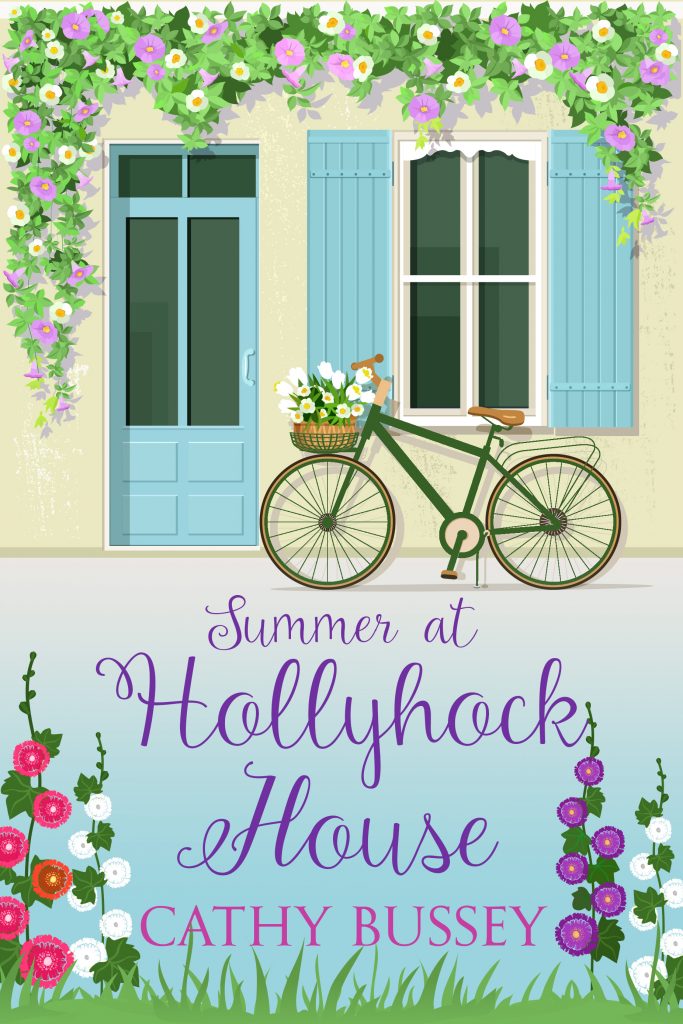
I would begin and I would know how it ended. I could never do the middle bit, connecting the dots, getting the characters from A to B. Slowly my interest and motivation would slip away, or I would start afresh, try again only to find the same cycle repeating itself.
If you search online for ‘how to write a novel’ you’ll come across many well-thought out blogs and articles and tips and exercises all designed to help.
Most of them involve things like, planning and writing out the story structure, getting the plot outline completed, developing your characters, going through various creative exercises on paper (if your character went out for lunch, what would they order?). It’s all highly organised and linear.
I did none of the above. The process of writing my novel was as far removed from a planned and organised creative exercise as it’s possible to be. It was completely unlinear.
I went through cycles of intense creativity and productivity, and these would slowly tail off and I would need to rest, get a few early nights, stop trying to force it and wait for the inspiration to return, trusting that it would – and it did. Every time.
It became clear to me that if I kept trusting the process – trusting myself – I was going to finish this book. I put all thoughts of publication out of my mind, stopped worrying about whether my agent would want to read it and whether she would consider it worthy of submission. I didn’t have to encourage myself or ‘fake it til I made it’.
I genuinely wanted to finish the book, to finish the book. That was the only goal. I retained of course an inkling that this could become something big for me if I did finish it and if my agent liked it and if somebody picked it up – but at this stage that was too many ‘ifs’ and all were out of my control.
The only thing in my control was whether or not I would finish the book, so that became the goal, and that’s what I did.
Throughout the process there were standout moments. Finishing, getting good feedback from my agent, getting a deal – they were all huge. But the real standout moment happened much earlier. It happened after those awkward, difficult times when I sat staring at a blank screen knowing what I had to write and feeling unable to write it, waiting to be ready to break through the block, refusing to shut down my computer and let the novel slip away as all its predecessors have done, because I couldn’t find the courage to do what I had to do.
The standout moment was when I realised I was going to finish. That I was not going to stop and I was going to do whatever it took to finish the book. Not in a half-assed ‘well I’ll just put up with some parts that don’t really work for me just to get it done’, but finish truly, with the knowledge deep inside me that I’d done the absolute best I could. I hadn’t shirked or taken the easy way out.
That was when I realised that the hard part – the middle bit, the connecting chapters, keeping the story going, retaining the flow – wasn’t hard at all. In fact it was the easiest part of all.
This is the first question for the crime writer, I’ve discovered. A tad macabre, but that’s the genre.
Hello there, victim, how would you like to die? I can strangle, bludgeon, knife or poison you, just for starters. But if that ain’t good enough, let’s be inventive. The sky’s the limit. The other day someone got mirrored to death in Midsomer Murders!
Problem is, the moment you decide how to kill someone, you’ve immediately got to find out what that’s going to do to their body. Enter medical research. That leads backwards to what your sleuth can and can’t notice and what it will tell her. She has to work out how it was done before she can figure out who dunnit.
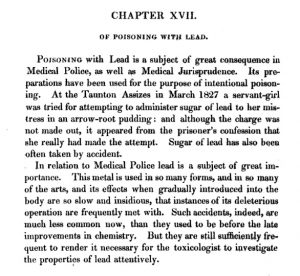 Just to complicate matters, when you set your crime in a historical context, you’ve got to find out what your medical man would have known at that time. Which isn’t what he knows now by a long chalk. At which point, thank heavens for the internet!
Just to complicate matters, when you set your crime in a historical context, you’ve got to find out what your medical man would have known at that time. Which isn’t what he knows now by a long chalk. At which point, thank heavens for the internet!
I turned up the most marvellous contemporary treatise on poisons on Google books, which tells me exactly what was known or thought about it, as well as how to recognise it, for every possible poison you could think of, and some you couldn’t. This was for the third book in my Lady Fan Mystery series. You can also dig up lots of accounts of horrific 18th century murders, which is extremely helpful, thank you, generating plenty of ideas.
There’s a strange satisfaction about killing victims off, I find. Does this mean I’m a closet murderer? Let’s be charitable, and say that it’s pure imagination and the writer’s mind. After all, I may kill them, but I’m also revenging their deaths and seeing that justice is done.
The other thing I’ve found is that you can’t avoid the inevitable exposition where your sleuth says how it was done. I’ve managed to steer clear of the cliché of gathering suspects together for the purpose, though, and tried to make it a natural part of the investigation process. But as a reader I wouldn’t be satisfied if the puzzle wasn’t somehow explained.
I don’t honestly think I’m going to spend too long worrying over the how-am-I-going-to-kill-you question. Ideas for future books seem to leap out at me with images of full-blown murders ready made. And the other common denominator? When I start writing the book, I haven’t a clue who dunnit or why. The fun of the genre is surprising myself with the answer.
It’s a truism that history is a set of facts left to posterity by the winners, and for historical novelists like me there’s always another ‘take’ on every so-called ‘fact’ we’re taught at school. A prime example of that is the enduring legend of ‘The Princes in the Tower’.
The first to get their stories organised were the Tudors who benefitted considerably from the unexplained disappearance from the Tower of London of the Yorkist royal heirs Edward, Prince of Wales, and Richard, Duke of York. 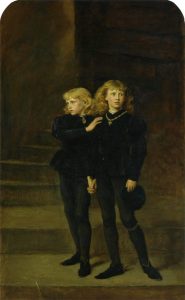
When Henry Tudor defeated Richard of Gloucester in an obscure field in Leicestershire we now know as ‘Bosworth’ (even though that town didn’t exist then), there was no one left on the Yorkist side to challenge his claim to the throne, given that the princes were no more. But it was essential to point the finger away from ‘the person most likely’ – the obvious suspect for the disappearances/deaths, and the Tudor propaganda machine swung into action.
Sir Thomas More possible lived to regret the assistance he gave to Henry VIII in perpetuating the myth that the person behind the disappearances of the princes from the Tower had been a close relative of theirs, namely their uncle. But More was the first to point the written finger at Richard of Gloucester, particularly after Sir William Tyrell, during the reign of Henry Tudor, allegedly confessed to having done the job in the pay of Richard. But tortured men will eventually say whatever their torturers want to hear, and the alleged confession came, second hand, through the mouth of the torturer.
 Never one to miss an opportunity to ingratiate himself with a royal patron, that literary prostitute William Shakespeare built Thomas More’s accusation into a horror story of a crook-backed, slew-footed, psychopathic freak who did away with anyone who stood between him and the throne. Actors such as Laurence Olivier and Benedict Cumberbatch then provided us all with a visual image to go with the verbal hype. The net result of all this ‘fake news’ was that we all grew up believing that Richard III had done for the two little boys under his guardianship.
Never one to miss an opportunity to ingratiate himself with a royal patron, that literary prostitute William Shakespeare built Thomas More’s accusation into a horror story of a crook-backed, slew-footed, psychopathic freak who did away with anyone who stood between him and the throne. Actors such as Laurence Olivier and Benedict Cumberbatch then provided us all with a visual image to go with the verbal hype. The net result of all this ‘fake news’ was that we all grew up believing that Richard III had done for the two little boys under his guardianship.
But spin the wheel 180 degrees, and there was someone else who benefitted equally from a sudden absence of Yorkist claimants to the English throne. He had an alibi, of course, because at the most likely date of the crime – the Summer of 1483 – he, Henry Tudor, was in exile in Britanny.
But back home in England, ‘Mummy’, the formidable, wily, scheming Margaret Beaufort, was preparing the runway for her favourite son’s safe landing with an invasion force. She also had a useful second son – Henry’s half-brother the Duke of Buckingham – who was Lord High Constable of England, with responsibilities that included security at the Tower of London. Go figure, as they say.
Having written a novel from the Tudor perspective (The Flowering of the Tudor Rose), and having suffered death by blog from dedicated ‘Ricardians’, I took up the case for the defence in Justice for the Cardinal, due for publication by Sapere Books later this year. The central character in this novel is Richard Ashton, grandson of the Duke of York who escaped from the Tower, only to be executed under his assumed name of ‘Perkin Warbeck’ by a paranoid Henry VII.
‘You pays your money . . . .’, as the old saying goes. The jury will forever remain out on who really ordered the murder of the princes. In the meantime, we historical novelists can play on both halves of the pitch.
The heroine of the Mina Scarletti books is not based on a specific individual; however when I created my diminutive protagonist two people were in my thoughts, one of whom I knew personally.
Eva was the aunt of a friend of mine. She had a very severe distortion of the spine, but the thing that I remember most about her was her sweet smile. I never got to know her well and she died when I was a child.
Annie Jane Fanny Maclean was delicate and very small, due to the curvature of her spine and she walked with a limp. In 1879 aged 33, she inherited some family property. She also attracted the attention of Lewis James Paine, a 49 year old insurance salesman in need of money. 
Unknown to Miss Maclean, Paine was a married man, although he denied it when challenged by her suspicious family. By July that year they were living together as husband and wife. Annie had been a moderate drinker, but Paine plied her with alcohol, sometimes forcing her to drink it against her will, and as she fell more and more under his control, he withheld food.
In September, in a very weakened state, she was induced to sign a deed making over her property to Paine. In less than a month she was dead.
Paine was tried for the wilful murder of Annie Maclean at the Central Criminal Court in February 1880. The question for the jurors was had Paine deliberately set out to kill, or had he caused death through recklessness and negligence? He was found not guilty of murder but guilty of manslaughter.
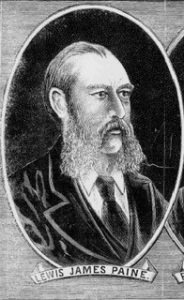 Paine made a long statement to the court, claiming innocence, but the judge, who clearly despised him, stated bluntly that he didn’t believe a word of it. He stated that Paine was guilty of manslaughter ‘in about as cruel and barbarous circumstances as I ever remember having heard of. . . . Had you been guilty of murder, you would most unquestionably have been hanged, as you richly deserve to be.’ (Times 25 Feb 1880 page 11) Paine was sentenced to imprisonment for life. He died in 1897.
Paine made a long statement to the court, claiming innocence, but the judge, who clearly despised him, stated bluntly that he didn’t believe a word of it. He stated that Paine was guilty of manslaughter ‘in about as cruel and barbarous circumstances as I ever remember having heard of. . . . Had you been guilty of murder, you would most unquestionably have been hanged, as you richly deserve to be.’ (Times 25 Feb 1880 page 11) Paine was sentenced to imprisonment for life. He died in 1897.
In commenting on the case, The Times pointed out that the victim’s appearance was not an insignificant fact, and this led me to reflect on the vulnerability of women in the Victorian marriage market, especially those with a disability, who if they had property could be manipulated by cruel and unscrupulous men.
Marriage and motherhood were considered to be the primary and most desirable roles for Victorian women, and Miss Maclean must have seen Paine, perhaps her only wooer, as her chance of happiness.
In Mina Scarletti, who has been told by her doctors that she must never think to marry, I have created a heroine who is able by her unique insight and force of will to make a challenging and fulfilling life for herself.
I began my writing career many moons ago when I was studying medicine at the University of Dundee in Scotland. At that time the city was famous for the ‘three J’s’ of Jute, Jam and Journalism. Journalism referred to the publishing firm of D C Thomson, which produced the famous Beano comic and countless other publications.
I submitted a few children’s stories to the People’s Friend, a well known family magazine that is still going strong today. To my surprise and delight they were accepted and I was soon regularly writing stories for the Children’s Corner on the inside back page. 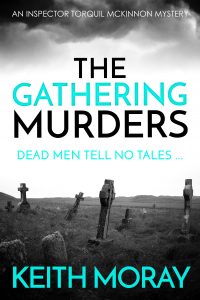
Then once I had graduated I moved to Hull. While I was working in cardiology I learned that the Kingston-upon-Hull telephone exchange had a ‘dial-a-bedtime’ story service. For the cost of a phone call parents could have a short three-minute bedtime story told to their youngsters over the phone. My stories were soon being recorded and heard by youngsters all over the city.
Inevitably, I longed to have my name on the spine of an actual book. It was then that I came across that old adage, ‘write about what you know.’ It is one of the nuggets of writing wisdom, except it is often misinterpreted.
In my case as a medical doctor I assumed that it mean that I should write a medical thriller or maybe a medical romance. My problem was that I worked in medicine and didn’t want to spend my thinking and writing time in medicine as well. So I had several false starts on various non-medical novels, and like most writers I have a drawer full of opening chapters for several books that never saw the light.
Then it dawned on me. It didn’t mean that I had to write exclusively about a medical world, but that I should use my medical knowledge to really make a character stand out and be believable. Or I should be able to drip in details about drugs, operations, or snippets of medical history, to give the work authenticity. And that is just what I did in my first western novel Raw Deal at Pasco Springs. I did the same with several other westerns before turning to crime!
I began by creating West Uist, an island in the Outer Hebrides of Scotland and peopled it with believable characters, including the local doctor, who doubles as a police surgeon. On the island my detective, Inspector Torquil McKinnon can solve crimes using his brains rather than depending upon forensic science and DNA. Yet in The Gathering Murders, the first novel in the series there is still plenty of medicine peppering the plot.
Crossing one genre gives you the confidence to do it again. The bridge that I use is medicine. I am able to create believable medical situations. For example, I write collaborative western novels with some other writers in the USA. We have created a town called Wolf Creek and each collaborator writes one or two chapters per novel from the viewpoint of his or her character.
My character is Dr Logan Munro the town doctor, who extracts bullets, sets broken bones and delivers babies. Similarly, I use my knowledge of the history of medicine in my historical novels, The Pardoner’s Crime and The Fool’s Folly, which are set in the thirteenth and fourteenth centuries.
Essentially, my message is that you don’t have to set your story in your relevant world. What you can do is drop in a character that shows your expertise. That is my interpretation of the axiom ‘write about what you know.’
